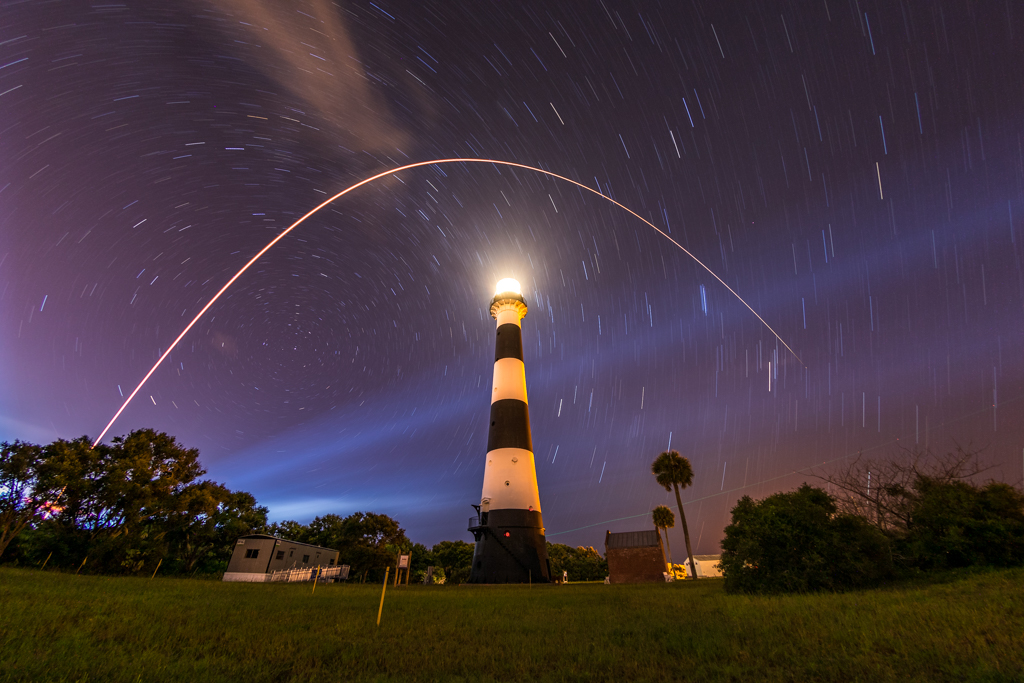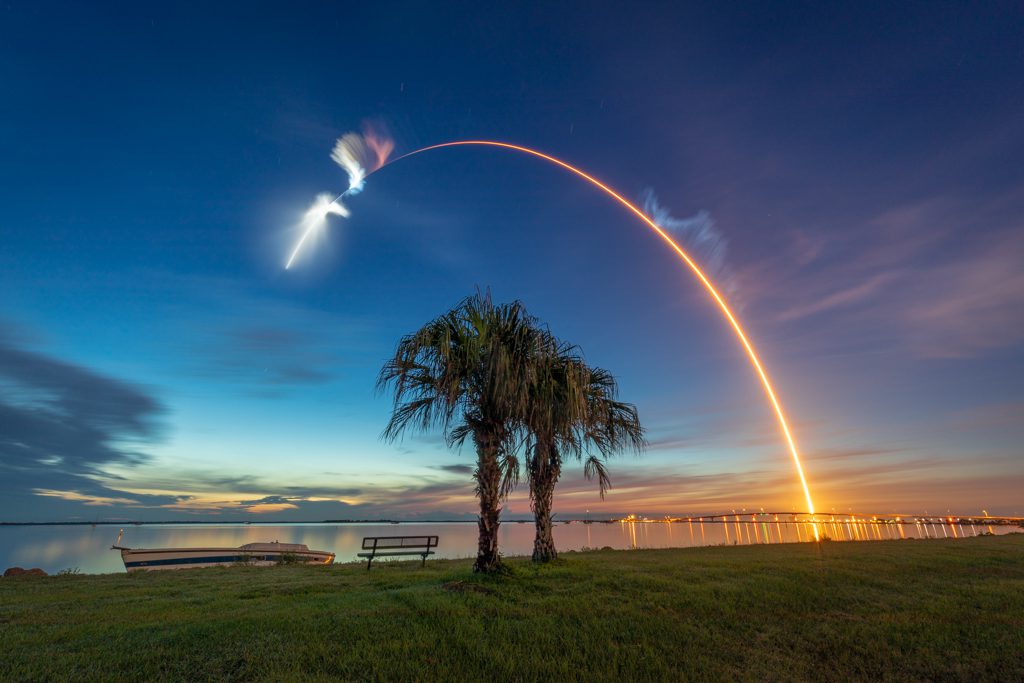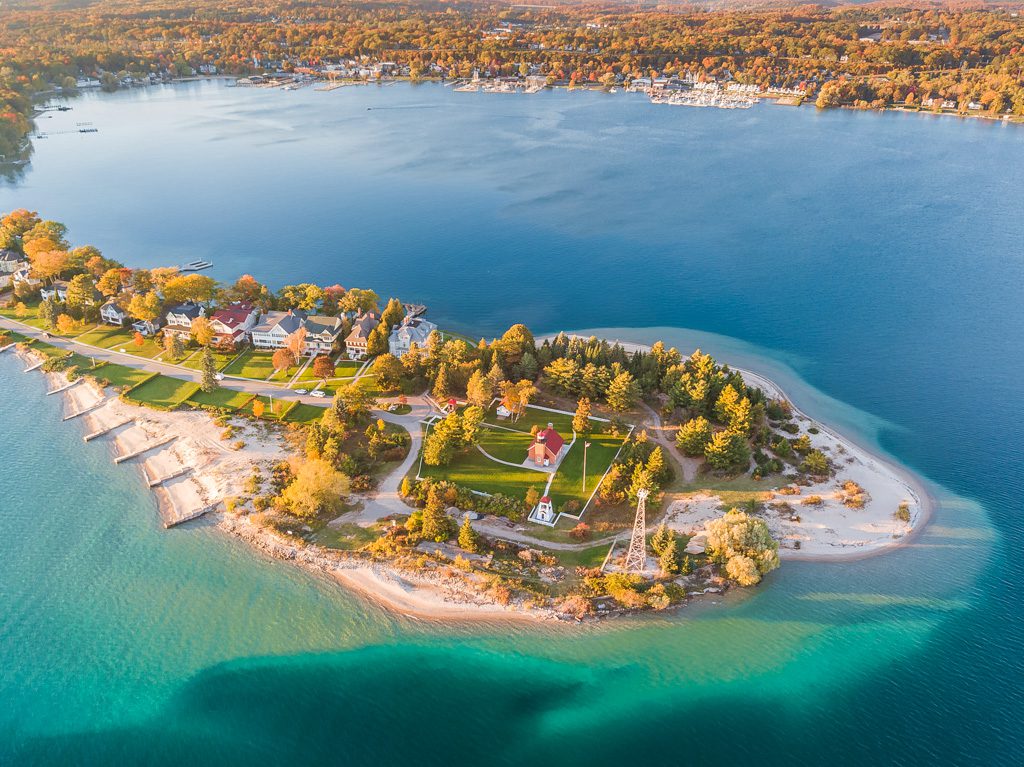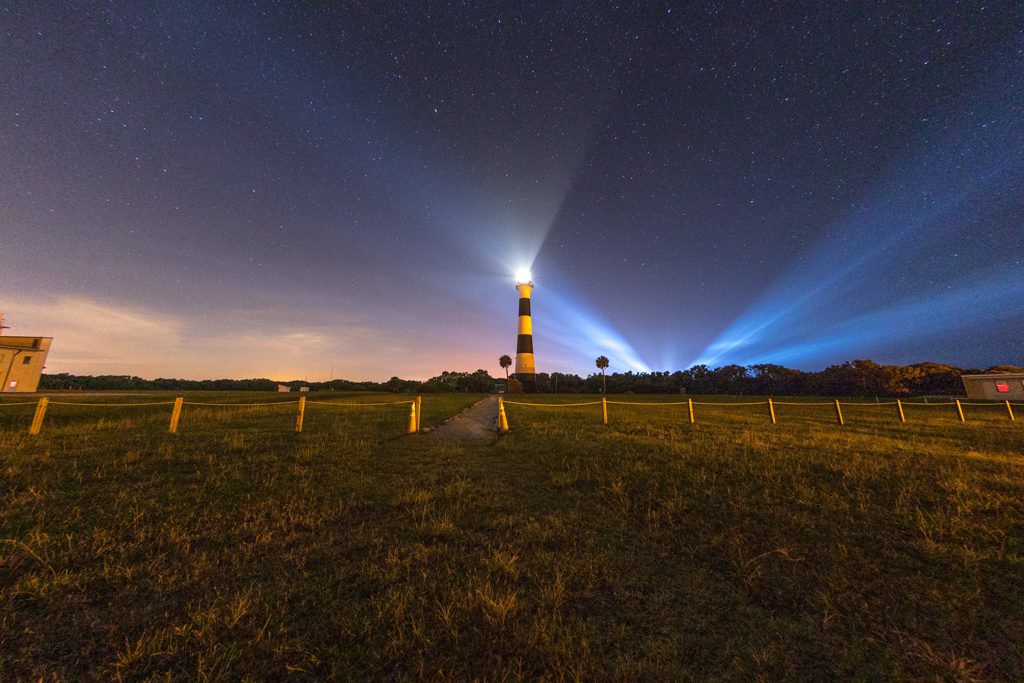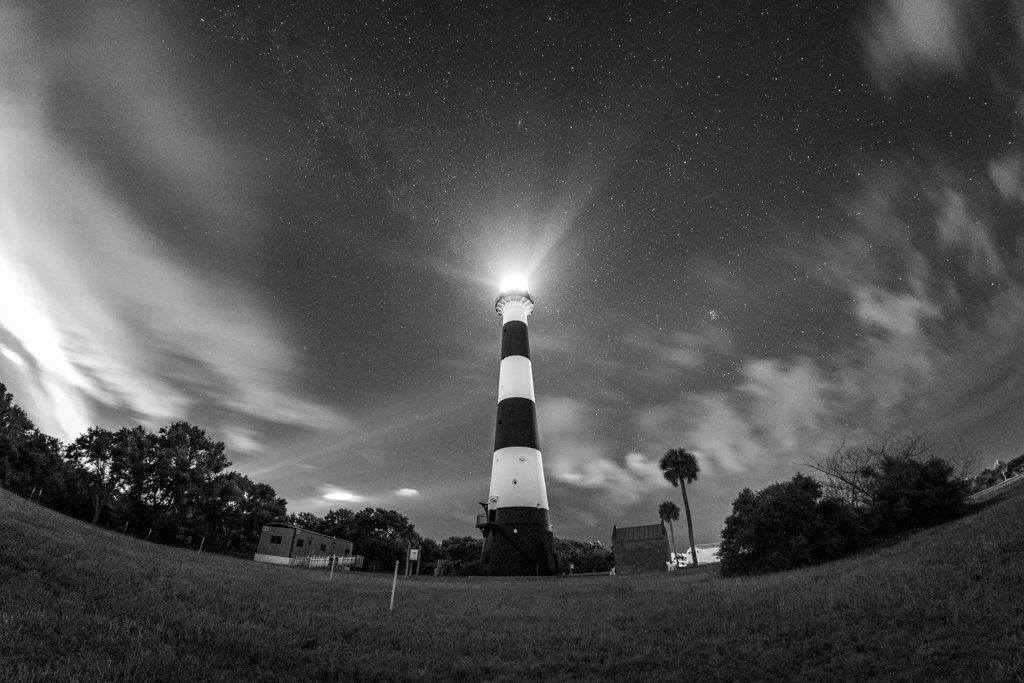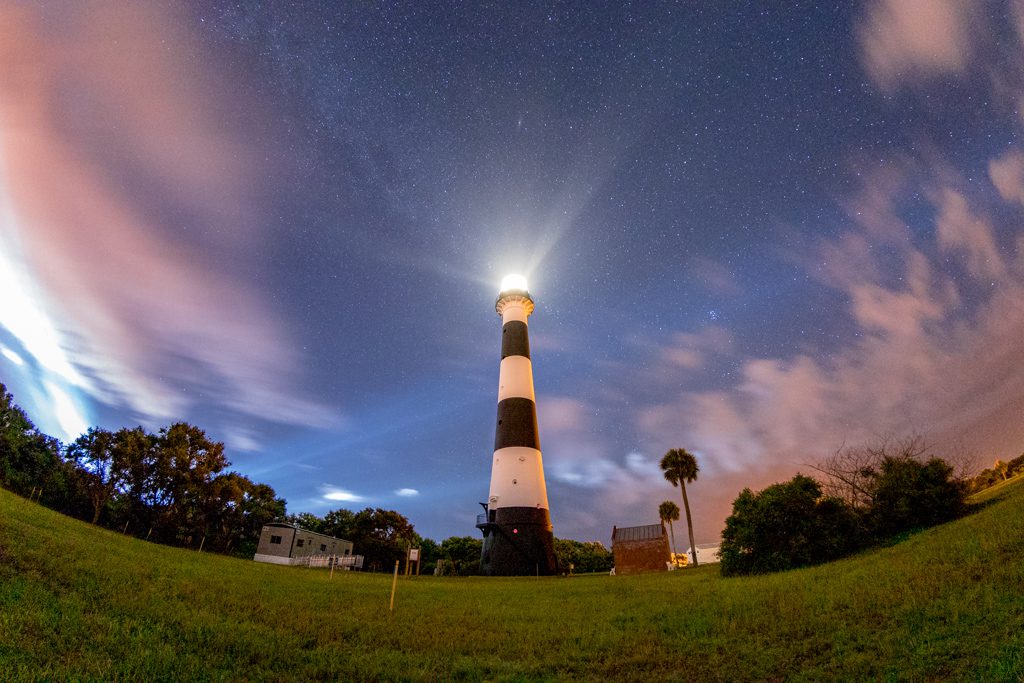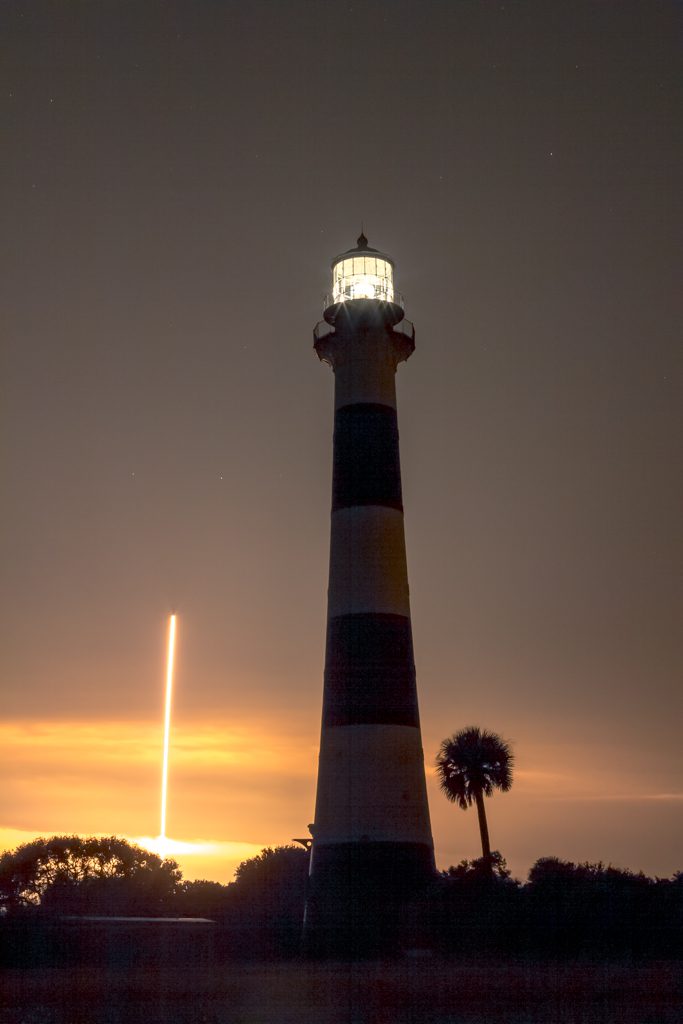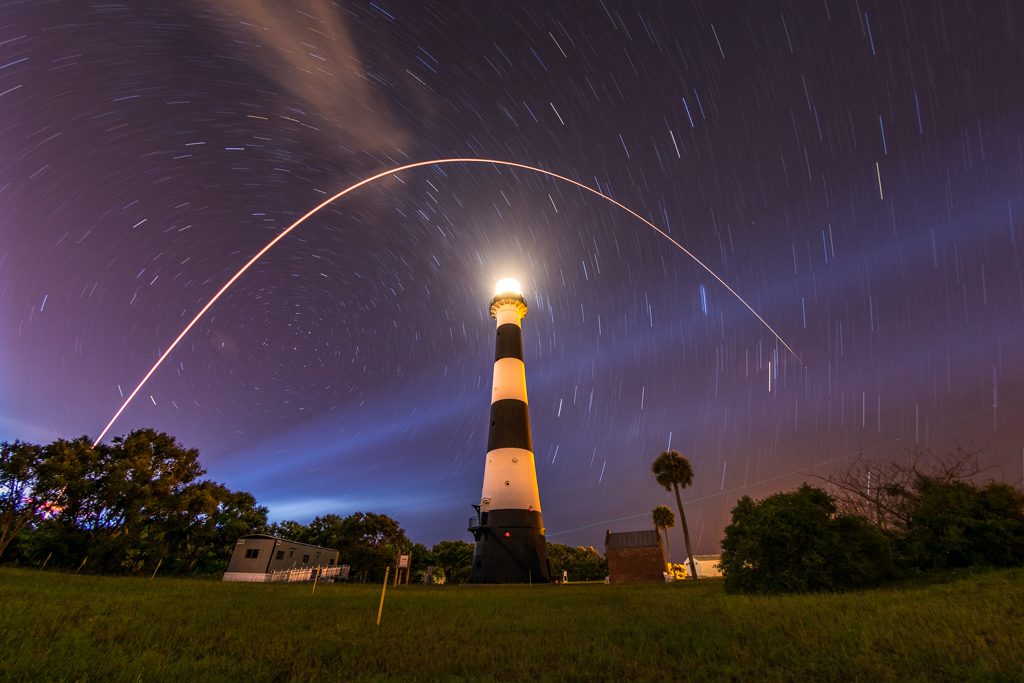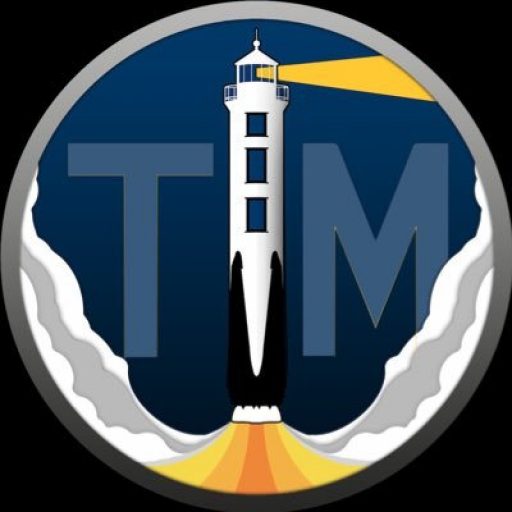The most challenging aspect of photography is filling the frame with interesting and eye-catching things, from foreground through to the background.
It’s not as challenging to find a nice sunset sky to put in the background or a subject to zoom into the foreground; putting them together or even finding an interesting middle ground element can sometimes seem impossible.
Ever since I made this single, long-exposure image of the SpaceX CRS-15 launch at sunrise in June flying over a pair of palm trees:
I’ve thought to myself, what else surrounding the Kennedy Space Center / Cape Canaveral area could I subject (foreground) in front of the launch (middle ground), and sky (background).
My top three creative passions are: lighthouses, rocket launches, and long-exposure photography — in no particular order.
Lighthouses captivate me like nothing else. I can’t quite put a finger on what intrigues me so much, but the history, standing the test of intense coastal weather/time, and being unique photographic subjects likely sums it up.
In 2017, I completed a goal to capture each and every coastal lighthouse on Lake Michigan. (If interested: Here are some of my best from the state of Michigan)
Rocket launches: well, this is obvious.
And finally, long-exposure photography: I’ve always thought it’d be cool to dabble with drawing and/or painting but there’s a mental barrier that I feel: “I have so much to learn before even attempting that.” Long exposure photography allows me to use the challenge of balancing light as my paint brush.
Thinking more deeply about subjects for night launch imagery: my mind immediately jumped to the Cape Canaveral Lighthouse. Currently the only operational lighthouse owned by the United States Air Force, it is stationed on the Cape Canaveral Air Force Station and separate from a paid tour every once in awhile, is not easy to visit.
A few times during my Lake Michigan Lighthouse project, I encountered private/gated lighthouses that, even asking politely for permission to visit and photograph, were unfortunately but understandably met with a No.
My solution was to instead, within all other rules/regulations, make a distant photo of the Little Traverse (Harbor Point) Lighthouse with my quadcopter, which I think turned out better than any ground based close-up could have. The color of the water, autumn leaves, and sandy shores —
Being on the Air Force Station, my solution this time was going to take some more effort than launching my quad.
My idea: a similar picture to CRS-15 and the palm trees, with the subject instead being the lighthouse centered in the frame and the Delta IV Heavy zipping over-top of it.
Much to my surprise, just 30 minutes after inquiring, Rocky Johnson from the Cape Canaveral Lighthouse Foundation got back to me, welcoming and applauding my idea.
We coordinated a scouting visit L-2 before the Parker Solar Probe launch with the 45th Space Wing and the lighthouse was even cooler in person:
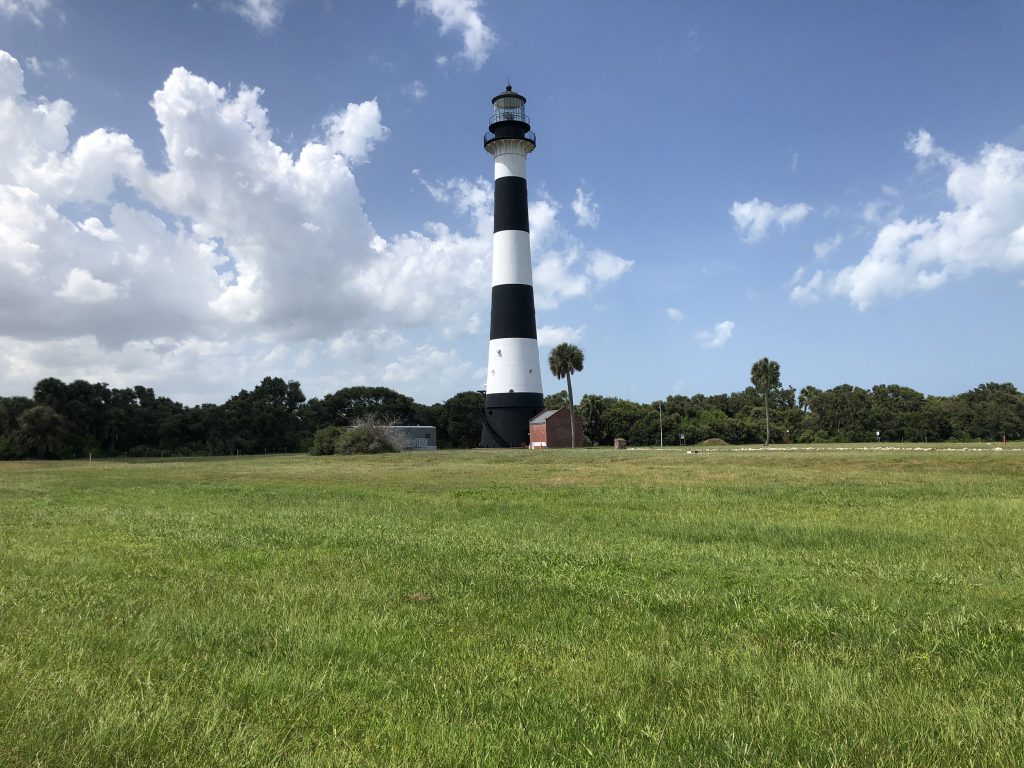
I was able to get a lay of the land and plan out where I would put the tripod down for the photo.
Standing 151 ft (46m) tall, the now-electrified lighthouse features a rotating beacon with twin lights, flashing twice, 4 seconds apart, and 20 seconds in-between.
- Beam 1 sweeps past
- 4 seconds
- Beam 2 sweeps past
- 20 seconds
- repeat
It was neat to see it in the daytime, but the real treat came on launch morning seeing the twin lights in action. (Delta IV SLC-37B shining in the distance)
It’s challenging to characterize what the rotating beacon looks like unless you’ve been to an active lighthouse at night.
They appear to the naked eye as a “V” of light, each about 10-15° wide and 60 deg apart, rotating pretty quickly. The lights seem to shine off into infinity, when actually they can be seen ~25 miles away. Even on the clearest of nights, the beams of light sweeping past are majestic. I could watch them for hours! (and we did, on launch attempt 1)
In the downtime on Saturday morning, I experimented with different exposure times. Here’s what 2.5 seconds looks like to help you get an idea of what the beams look like, appearing wider than they actually are due to the long exposure:
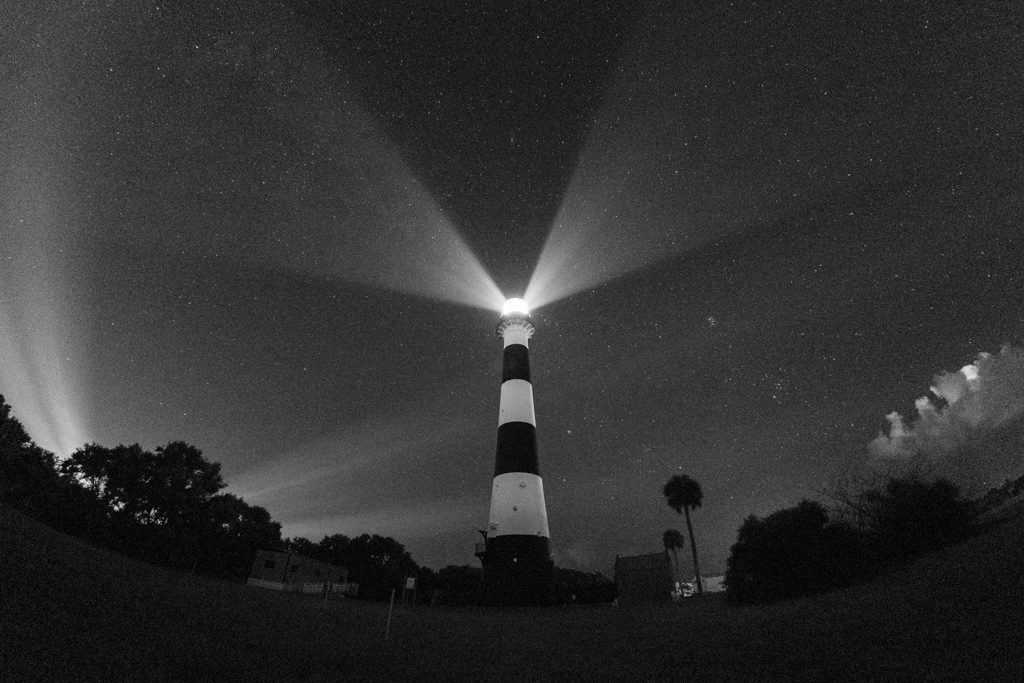
the photo above is quite grainy due to the short exposure time (when one goes down – exposure time, something has to increase – ISO)
So here’s what a black and white long exposure (lower ISO) looks like as the clouds rolled through on night 1:
and in beautiful color:
It was just after this photo was taken, the initial launch attempt was scrubbed, we packed up shop, and headed to bed — to try again tomorrow.
Similar to the beacon, a feeling of disappointment swept over. The forecast for the backup launch day didn’t look great and I thought, similar to CRS-15 if you watched my YouTube video, all this work will be for nothing. We’ll get clouded over and the streak won’t pan out.”
Boy was I wrong! Another reason to be confident in your idea.
The next attempt, we slept a bit longer and met at a later time because we knew where we were going, setting up, etc.
Having done the routine once before, I had the free time (and more importantly, free mind power) to set up a backup long-exposure. I debated whether or not I should “distract” myself with a backup. Akin to doing one thing great, rather than two things meh.
I decided I had enough confidence in my primary photo to do a backup.
It ended up being a bit shorter than I thought, but that’s why it’s a back up!
I think the fact that CRS-15 was a sunrise photo is hard to top, and remains my favorite work to date but that doesn’t mean this isn’t equally epic and deserves publishing. It’s incredibly unique in its own way.
The single exposure finished, and again I couldn’t believe my mind. The launch streak photo had worked perfectly as planned.
Now, wait just a minute.
You’re probably thinking to yourself: how in the heck did you know:
- where to stand?
- where to point?
- what lens to use?
I plan on making a tutorial, getting into the nitty gritty of the technical details while keeping it easy to understand and help you take your own launch photo, just like this.
Enjoy this? Show your support over on Patreon and you’ll be notified first when tutorials and posts like this goes live!
In the meantime, you can click here to discover the settings and get hi-res downloads of the photos in this post.
I want to give a special thanks to the Cape Canaveral Lighthouse Foundation and the 45th Space Wing for allowing me this incredibly unique opportunity.
Most importantly, to Eric from the Lighthouse Foundation for braving the early morning hours on both launch attempts, Saturday and Sunday. Without his escort and company, these photos and this opportunity would not have been possible.
Keep looking up!
-Trevor
Leave your email below to keep up-to-date with the latest in spaceflight! (A few emails a month, max.)

